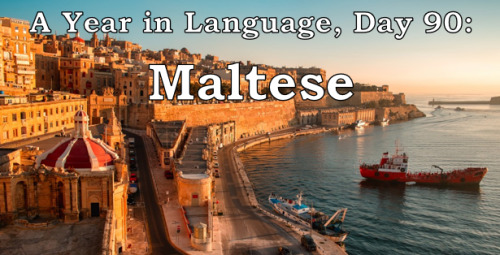
A Year in Language, Day 90: Maltese
Maltese is the national language of Malta, an island republic in the Mediterranean sea just south of Italy. Maltese is a Semitic language, sister to Arabic and Hebrew, the only Semitic language to serve as an official language of the European Union.
Much in the same way the English is a Germanic language that has been marked by an enormous influx of Romantic words and affixes, Maltese is a Semitic language that has undergone the same process, influenced primarily by Italian. The division of root origins between Semitic and Romance is about 50/50. Also like in English, Romance words compromise most of its academic, technical, and generally prestige vocabulary, while most of its more basic vocabulary and grammar words are Semitic.
As most of the grammar is Semitic this means the grammar of Maltese include trilateral roots. In all Semitic languages, morphology (word structure) is based on sets of three consonants, which determine meaning (i.e. “ktb” = “write”) are set with intervening vowels and affixes for precise grammatical meaning (“ktibna” = “we wrote”). Romance roots also take on Semitic affixes, though don’t normally change their vowels. The definite article (English “the”) in Maltese is “Il-”, which is very similar to the Italian equivalent, but is actually from the “al-” of Classic Arabic.
Unlike other Semitic languages Maltese lacks emphatic consonants, though it does have a pharyngeal consonant, written “ħ” both in Maltese orthography and IPA.
Nessun commento :
Posta un commento